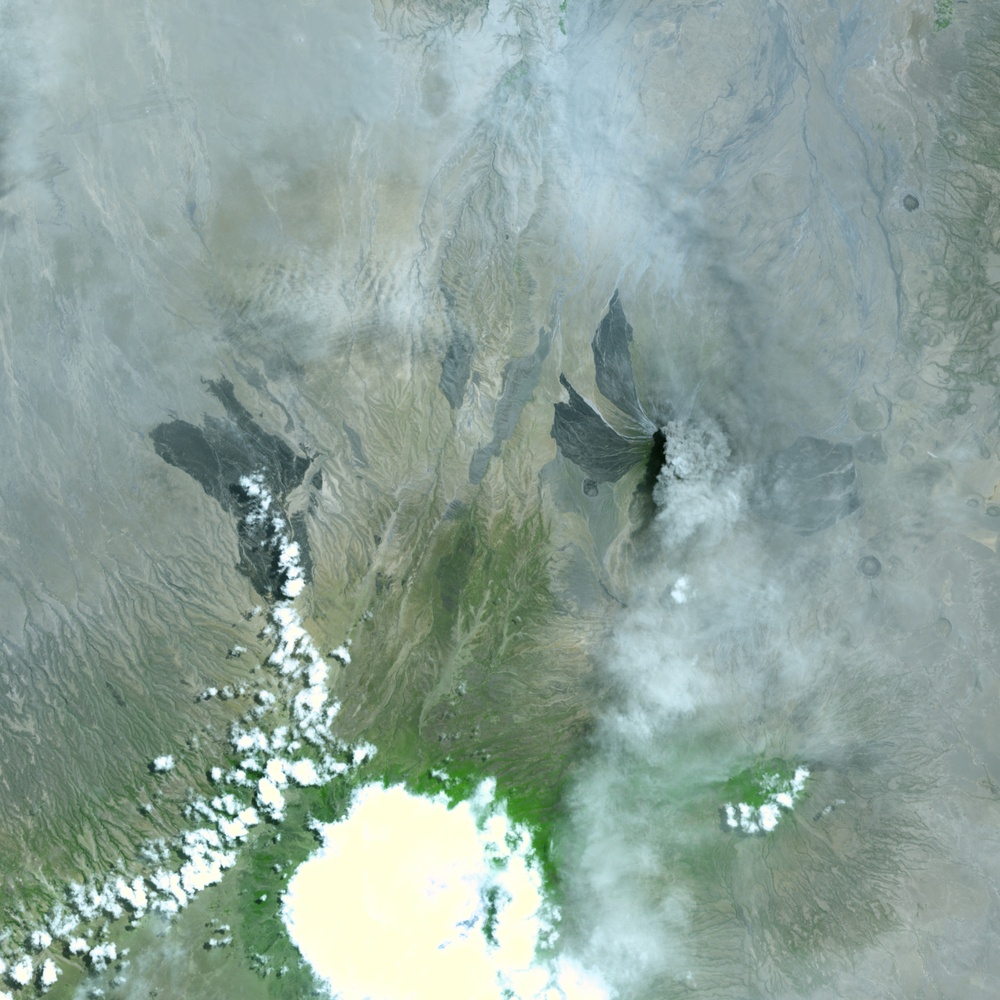
In early September 2007, Tanzania's Ol Doinyo Lengai Volcano erupted, sending a cloud of ash into the atmosphere. On September 4, 2007, the Advanced Spaceborne Thermal Emission and Reflection Radiometer asterweb.jpl.nasa.gov (ASTER) on NASA's terra.nasa.gov Terra satellite captured this image of the volcano sending a plume of ash and steam southward. The volcanic plume appears pale blue-gray, distinct near the summit, and growing more diffuse to the south. On the land surface, green indicates vegetation, and beige and gray indicate bare or thinly vegetated ground. The charcoal-colored stains on the volcano's flanks appear to be lava, but they are actually burn scars left behind by fires that were spawned by fast-flowing, narrow rivers of lava ejected by the volcano.
An explosive eruption of ash and steam is rare for Ol Doinyo Lengai. Typically, volcanic activity at the volcano consists of lava flows that are restricted to the summit crater. This eruption, however, sent ash downwind at least 18 kilometers (11 miles).
www.volcano.si.edu/world/volcano.cfm?vnum=0202-12= Ol Doinyo Lengai is an unusual volcano. Like many other volcanoes on Earth, it is a composed of alternating layers of hardened lava, solidified ash, and rocks from previous eruptions. Unlike other volcanoes, however, Ol Doinyo Lengai is the only active volcano on Earth known to produce lava.
Natrocarbonatite has a relatively low temperature, about 500 to 600 degrees Celsius (930 to 1,100 degrees Fahrenheit), compared to typical lavas, which are about 700 to 1,200 degrees Celsius (1,300 to 2,200 degrees Fahrenheit). Although still hot enough to burn much of what it directly touches, this lava is cool enough to allow close-up inspection without the routine layers of protective gear that volcanologists use elsewhere.
But while it is cooler than other lavas, natrocarbonatite lava is also less viscous. Its more fluid consistency means this lava is also faster than other lavas; in fact, it can flow faster than a person can run. Natrocarbonatite lava is composed of minerals that react easily with atmospheric moisture, and exposed lava begins to lighten shortly after eruption.
You can download a eoimages.gsfc.nasa.gov/images/imagerecords/8000/8053/oldoinyo_ast_2007247.kmz 15-meter-resolution KMZ file of Ol Doinyo Lengai suitable for use with earth.google.com/ Google Earth.
| Date Taken: | 07.09.2011 |
| Date Posted: | 10.19.2012 16:34 |
| Photo ID: | 754759 |
| Resolution: | 2400x2400 |
| Size: | 2.84 MB |
| Location: | WASHINGTON, DISTRICT OF COLUMBIA, US |
| Web Views: | 33 |
| Downloads: | 0 |
